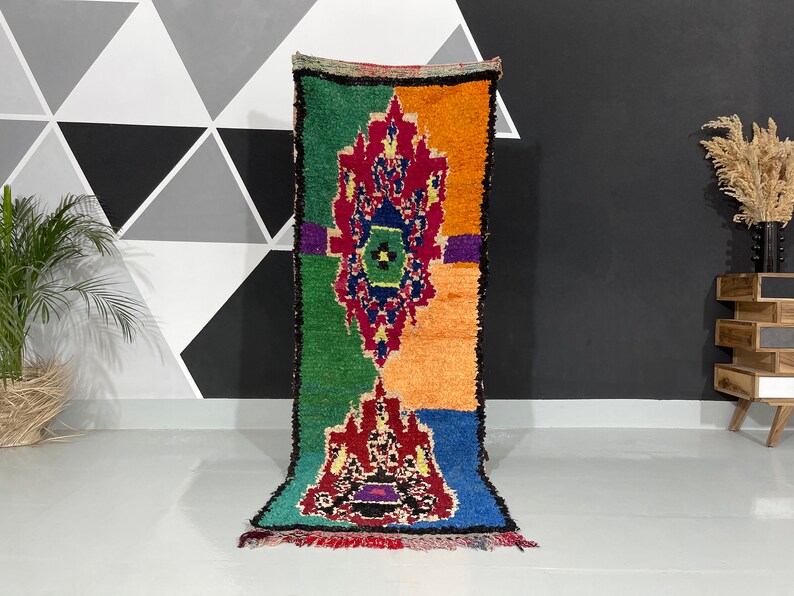Boucherouite rugs, also known as “rag rugs,” are a type of traditional Moroccan rug made from recycled textiles such as clothing scraps, cotton, and wool. These colorful and unique rugs have gained popularity in recent years as a sustainable and affordable alternative to traditional wool or silk rugs.
The word “boucherouite” comes from the Moroccan Arabic word “bu sherwit,” which means “a piece torn from pre-used clothing.” In the past, these rugs were made by rural women who would gather old clothes and fabrics and weave them together to create a new rug. They were often made for personal use or to be given as gifts.

Boucherouite rugs are now created by artisans throughout Morocco using a variety of textiles, including cotton, wool, nylon, and even plastic. The fabrics are torn into strips and woven together to create a unique design. The rugs often feature bold geometric patterns and bright colors, creating a vibrant and playful look.
One of the key benefits of boucherouite rugs is their sustainability. By using recycled fabrics, they reduce the amount of waste that would otherwise end up in landfills. Additionally, many of the artisans who create these rugs are able to earn a living through their craft, providing economic opportunities in rural areas.
In addition to being sustainable, boucherouite rugs are also incredibly versatile. They can be used as floor coverings, wall hangings, or even as decorative throws. They add a pop of color and texture to any space, and their unique designs make them a conversation piece.

When purchasing a boucherouite rug, it is important to look for quality. While the rugs are often more affordable than traditional wool or silk rugs, they should still be well-made and durable. Look for tight weaving and even edges, as well as vibrant colors that have been set with a fixative to prevent fading.
Overall, boucherouite rugs are a beautiful and sustainable addition to any home. Their unique designs and colorful patterns make them a standout piece in any room, while their use of recycled materials helps to reduce waste and support local artisans.

